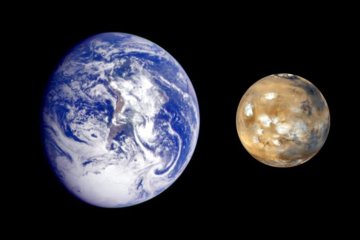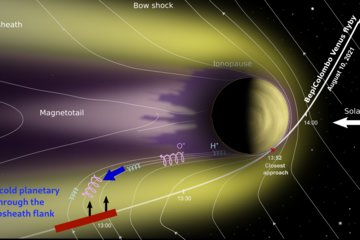All genres
61.
Journal Article
"TNOs are Cool'': A survey of the trans-Neptunian region. I. Results from the Herschel science demonstration phase (SDP). Astronomy and Astrophysics 518, L146 (2010)
62.
Journal Article
Retrieval Simulations of Atmospheric Gases from Herschel Observations of Titan. Advances in Geosciences, pp. 335 - 348 (2010)
63.
Journal Article
Preparation for the solar system observations with Herschel: Simulation of Jupiter observations with PACS. Planetary and Space Science 58, pp. 1692 - 1698 (2010)
64.
Journal Article
Preparation for the solar system observations with Herschel: Simulation of Jupiter observations with PACS. Planetary and Space Science 58 (13), pp. 1692 - 1698 (2010)
65.
Journal Article
The Herschel-SPIRE submillimetre spectrum of Mars. Astronomy and Astrophysics 518, L151 (2010)
66.
Journal Article
Water and related chemistry in the solar system. A guaranteed time key programme for Herschel. Planetary and Space Science 57, pp. 1596 - 1606 (2009)
67.
Journal Article
Triple F-a comet nucleus sample return mission. Experimental Astronomy 23, pp. 809 - 847 (2009)
68.
Journal Article
Triple F—a comet nucleus sample return mission. Experimental Astronomy 23 (3), pp. 809 - 847 (2009)
69.
Journal Article
TNOs are Cool: A Survey of the Transneptunian Region. Earth, Moon and Planets 105, pp. 209 - 219 (2009)
70.
Journal Article
HHSMT observations of the Venusian mesospheric temperature, winds, and CO abundance around the MESSENGER flyby. Planetary and Space Science 56, pp. 1688 - 1695 (2008)
71.
Journal Article
Mesospheric vertical thermal structure and winds on Venus from HHSMT CO spectral-line observations. Planetary and Space Science 56, pp. 1368 - 1384 (2008)
72.
Journal Article
Observations of Comet 9P/Tempel 1 around the Deep Impact event by the OSIRIS cameras onboard Rosetta. Icarus 187, pp. 87 - 103 (2007)
73.
Journal Article
Gas and Dust Condensations and a Peculiar Class 0 Object in the Lupus 3 Star-Forming Cloud. Astrophysical Journal 659, pp. 1382 - 1393 (2007)
74.
Journal Article
Discovery of the Optical Transient of GRB 990308. Astrophysical Journal 524, p. 103 (1999)
75.
Book Chapter
5 - Atmospheric circulation and dynamics - Observations and knowledge gaps. In: Towards understanding the climate of Venus: Applications of terrestrial models to our sister planet, pp. 55 - 72 (Eds. Bengtsson, L.; Bonnet, R.-M.; Grinspoon, D.; Koumoutsaris, S.; Lebonnois, S. et al.). Springer-Verlag, Berlin (2012)
76.
Book Chapter
Retrieval Simulations of Atmospheric Gases from Herschel observations of Titan. In: Advances in Geosciences, pp. 335 - 348 (Eds. Bhardwaj, A.; Haider, S. A.; Hartogh, P.; Ip, W.-H.; Ito, T. et al.). World Scientific Publishing Co., Singapore (2011)
77.
Book Chapter
Modeling of the Terminal Velocities of the Dust Ejected Material by the Impact. In: Deep Impact as a World Observatory Event - Synergies in Space, Time (Eds. Kaeufl, H. U.; Sterken, C.). Springer Verlag (2007)
78.
Proceedings
Laboratory Astrophysics Data Working Group IAU 2022 GA session. IAU Symposium, 2024. (2024), 43-48 pp.
79.
Proceedings
About the atomic and molecular databases in the planetary community - A contribution in the Laboratory Astrophysics Data WG IAU 2022 GA session. IAU Symposium, 2024. (2024), 87-91 pp.
80.
Conference Paper
The visible and thermal light curve of the large Kuiper belt object (50000) Quaoar. In: European Planetary Science Congress, pp. EPSC2024 - 104. European Planetary Science Congress, Berlin, Germany, 2024. (2024)











